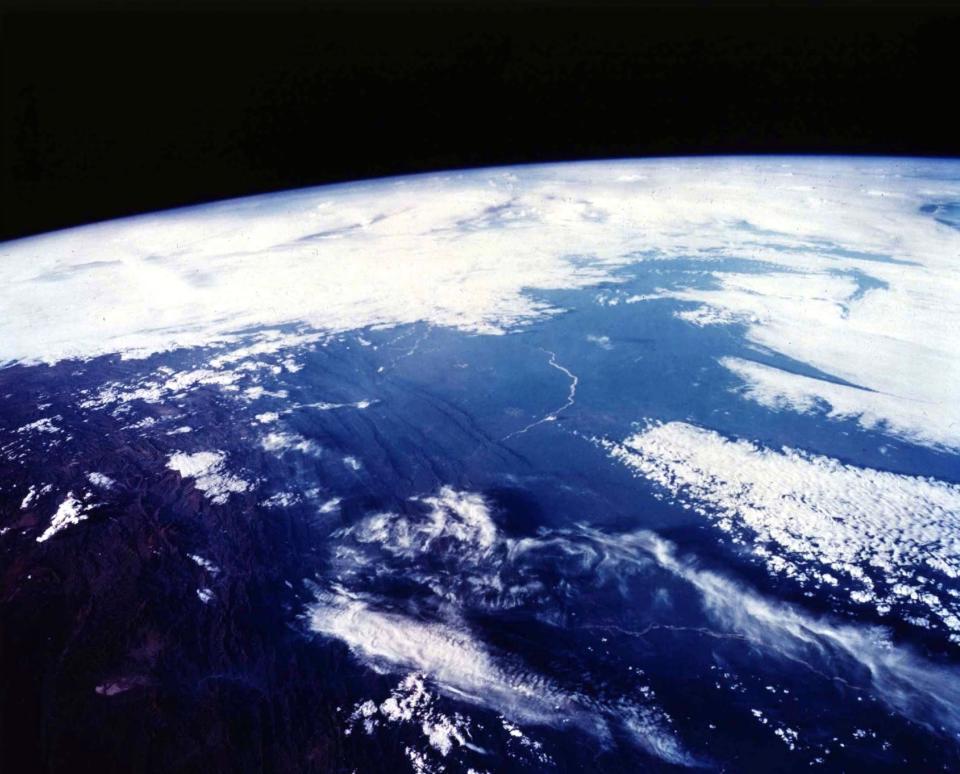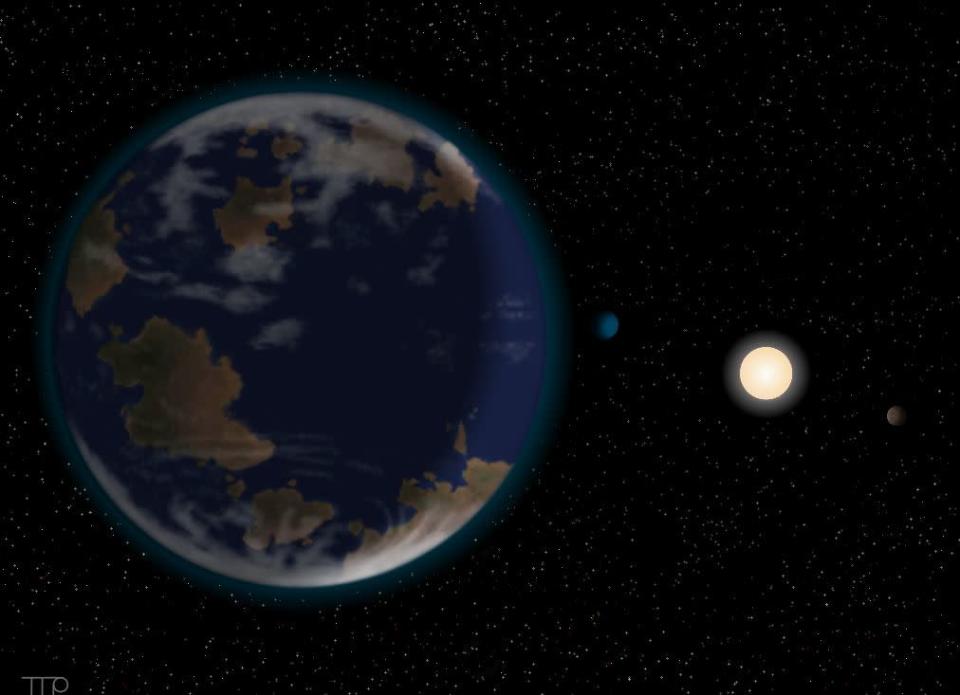'Super-earth' is nearest planet ever found which could support alien life
A huge 'super earth' detected this week is the closest 'habitable' planet to Earth ever found - 42 light years away from our planet.
A huge 'super earth' detected this week is the closest 'habitable' planet to Earth ever found - 42 light years away from our planet.
The huge planet is thought to be in the perfect place in its six-planet solar system to have liquid water, atmosphere and distinct 'days' and 'nights' - thought to be crucial life.
The huge rocky planet - seven times the size of our Earth orbits its star, at a similar distance to Earth's orbit around our Sun, so it receives a similar amount of energy from the star as the Earth receives from the Sun - increasing the probability of it being habitable.
Earlier this year, the Kepler spacecraft found a planet with a similar orbit.
[Related: Bond's most realistic enemy ever? Cyber experts analyse Skyfall]
However, Kepler 22d is located 600 light years from Earth, whereas this new super-Earth planet known as HD 40307g is much closer - 42 light years from Earth.
This is where the presence of liquid water and stable atmospheres to support life is possible and, more importantly, the planet is likely to be rotating on its own axis as it orbits around the star creating a daytime and night-time effect on the planet which would be better at creating an Earth-like environment.
Guillem Angla-Escude said: "The star HD 40307, is a perfectly quiet old dwarf star, so there is no reason why such a planet could not sustain an Earth-like climate."
The system was previously thought to contain three planets in orbits too close to the star to support liquid water.
By avoiding fake signals caused by stellar activity, the researchers have identified three new super-Earth planet candidates also in orbit.
Mikko Tuomi said: "We pioneered new data analysis techniques including the use of the wavelength as a filter to reduce the influence of activity on the signal from this star. This significantly increased our sensitivity and enabled us to reveal three new super-Earth planets around the star known as HD 40307, making it into a six-planet system."
Of the new planets, the one of greatest interest is the one with the outermost orbit from the star -– with a mass at least seven times of the Earth.
Hugh Jones, University of Hertfordshire, added: "The longer orbit of the new planet means that its climate and atmosphere may be just right to support life. Just as Goldilocks liked her porridge to be neither too hot nor too cold but just right, this planet or indeed any moons that is has lie in an orbit comparable to Earth, increasing the probability of it being habitable."

 Yahoo News
Yahoo News 


